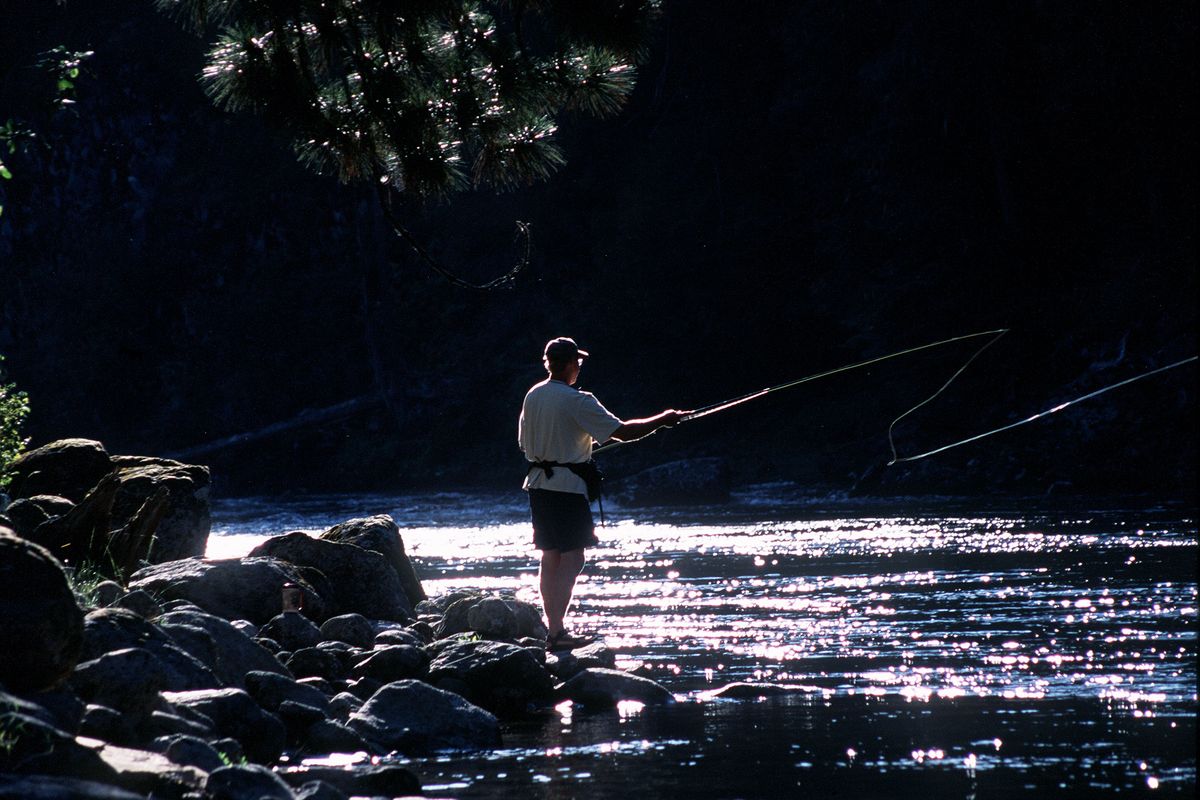Selway River trout thrive in sanctuary away from crowds

A splash breaks the surface of a deep, jade-colored pool in the Selway River.
“Fish on!” That phrase echoed constantly on a 47-mile, float trip through the Selway-Bitterroot Wilderness, the third-largest wilderness in the Lower 48.
It’s pristine land on the Idaho/Montana border and a land of westslope cutthroat trout, black bears, eagles, ospreys, deer and other big-game animals.
You could see the wild westslope cutt dart from beneath an underwater cliff of gray-black granite spiced with blackish-green moss and orange lichen.
The fish headed straight for, and nailed, a gold Thomas Buoyant lure cast by whitewater rafter Mary Nielsen.
Meanwhile, her husband, Alan Hamilton (of Aire rafts), who was also rowing a cataraft, was reeling in a fish from the opposite side of the pool.
Cutthroat trout fishing on the Selway River is world-class, but less well known than other rivers because it’s remote and tends to be floated more often by whitewater rafters than anglers, but some do both.
“The fishing was excellent,” said Nielsen, who was a member of a party that launched July 28 during the river’s summer permit season. “It was a lot of fun to catch so many fish.” “So many fish” is the story for this river, where floaters caught and released up to 30 cutts in a day.
Considering they also had to row around boulders and through rapids, that’s phenomenal.
The Selway is smack dab in the middle of 1.3 million acres of wilderness and protected by limited rafting permits, strict fishing regulations and some of the gnarliest rapids in the West, not to mention rough shoreline trails spiced with rattlesnakes.
Getting to Selway cutthroats entails getting a float permit for the period from May 15 to July 31, a time for the best flows.
Rafters from as far away as Australia, Malaysia and the Virgin Islands apply for permits.
Only one launch a day is allowed during the permit season, making it a trip where you often won’t see another rafting party.
This year, 2,815 people applied for 62 permits for private, noncommercial rafters. The drawing offers a 1-in-45 chance of getting a permit.
In contrast, 387 permits are issued for the popular Middle Fork of the Salmon River through the Frank Church-River of No Return Wilderness. The success ratio is 1 in 26.
Upward of 1,200 people can float the Selway in the permit season, depending on group size, water flows and the weather.
By comparison, almost 16,000 people can float the Middle Fork during its permit season.
Getting a permit for the Selway doesn’t solve your cutthroat-seeking challenges. Running the river requires expert skills and demanding paddling or rowing.
You must also be prepared to deal with emergencies in the middle of nowhere.
Backpacking the trail through the river corridor also is demanding.
The river is guarded by high mountains and deep canyons and flows through groves of old-growth timber and thick brush.
Just getting to the trailheads takes effort.
The trail along the river goes about 50 miles starting at the upper trailhead at the Paradise launch site west of Darby, Mont.
The lower trailhead is at Race Creek above Selway Falls about 20 miles from U.S. 12 and the tourist burg of Lowell.
Getting to Paradise requires about 60 miles of bumpy pavement and tire-eating gravel.
The trail along the river is beautiful. It goes through old-growth cedar, fir and spruce forests and along open grassy slopes with ponderosa pines.
But the hike isn’t a piece of cake. It just doesn’t follow the river and drop in elevation. It zig-zags up drainages away from the river and over ridges. You’ll feel the elevation gains and losses carrying a backpack.
There are numerous high-water stream crossings along the trail in the early season.
Few hike the trail, which makes it a real wilderness experience.
But once you get to the river by raft or on foot, you’ll be casting a barbless caddis or Stimulator or spinner for very cooperative cutts.